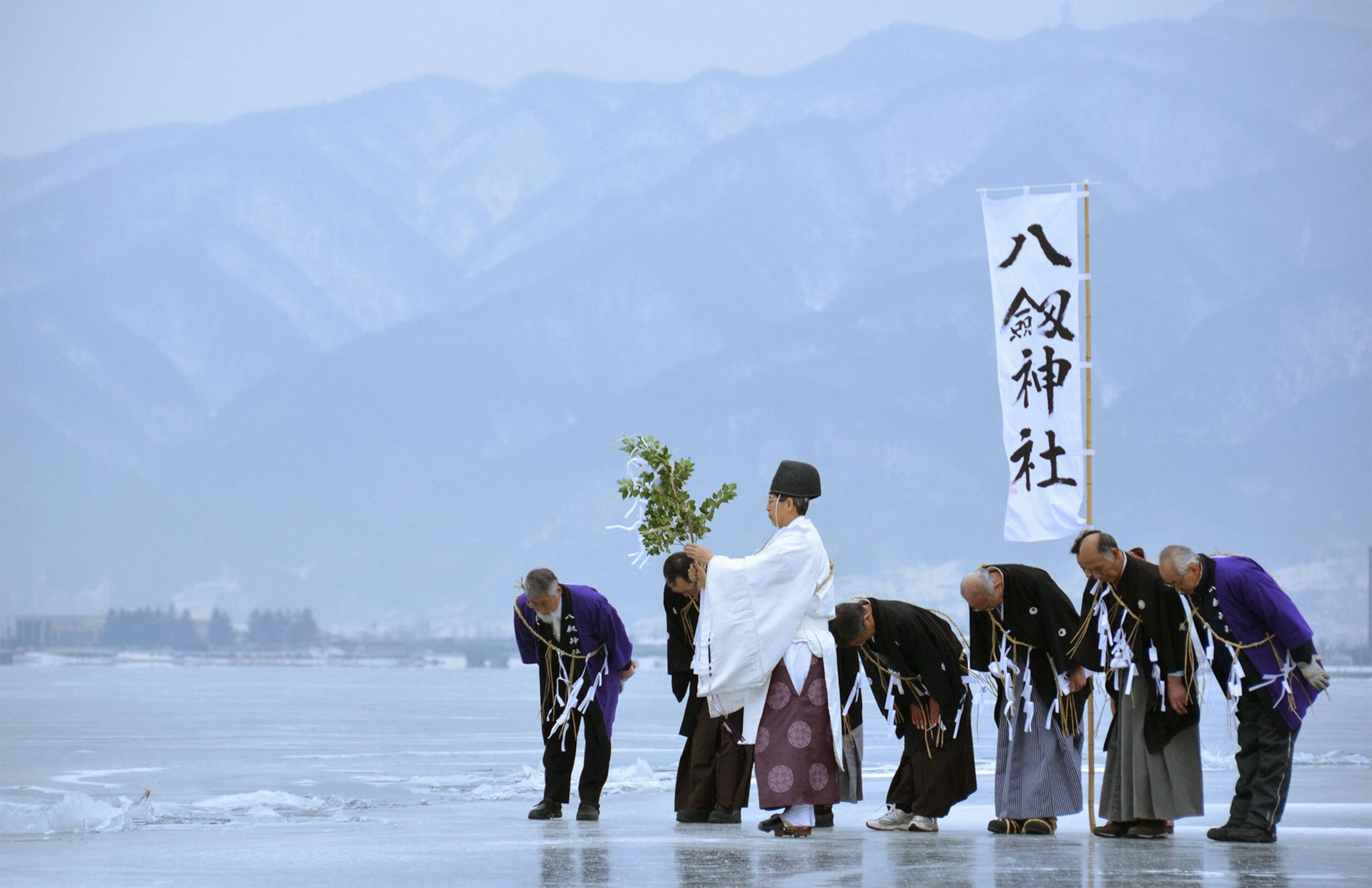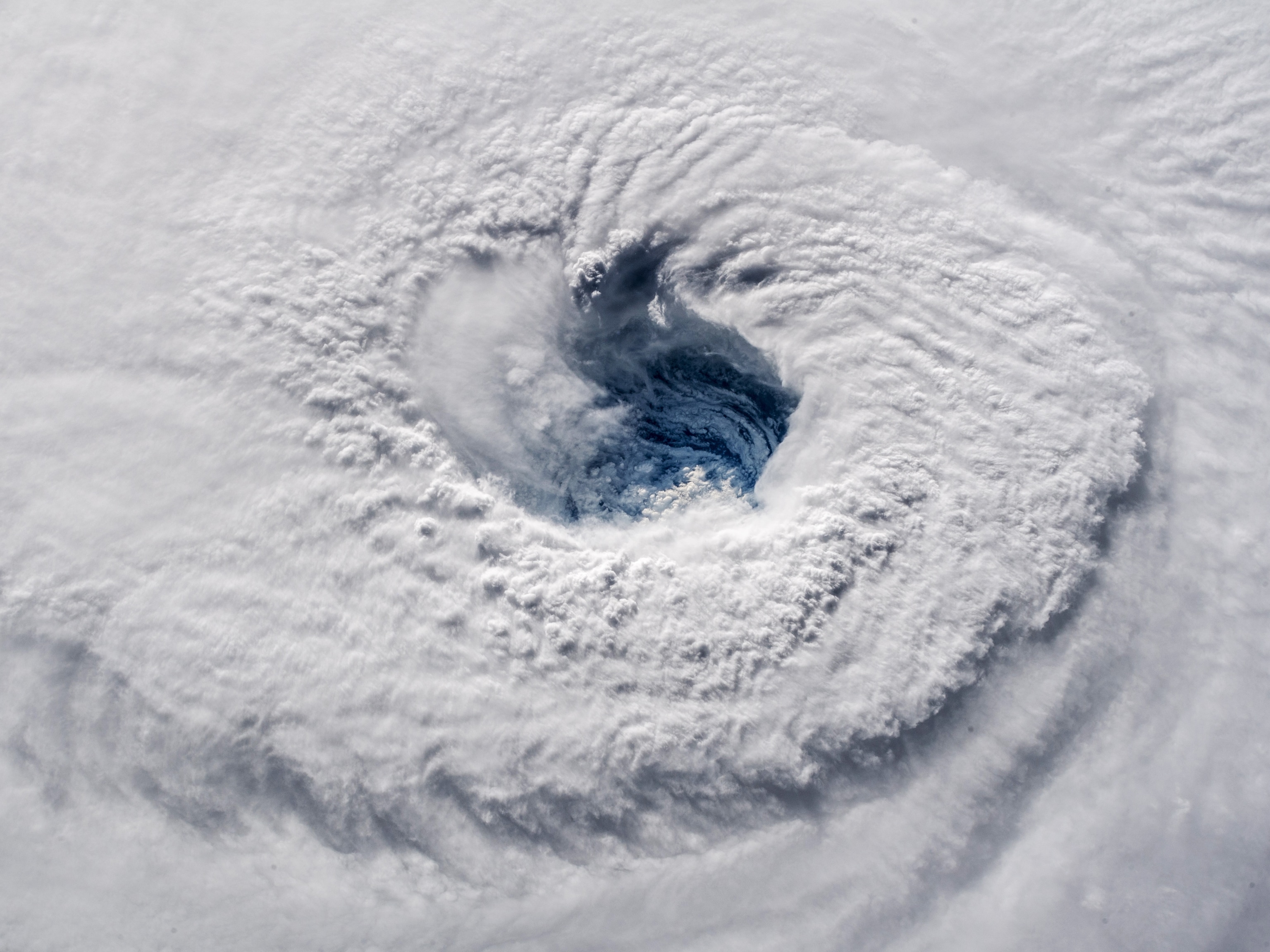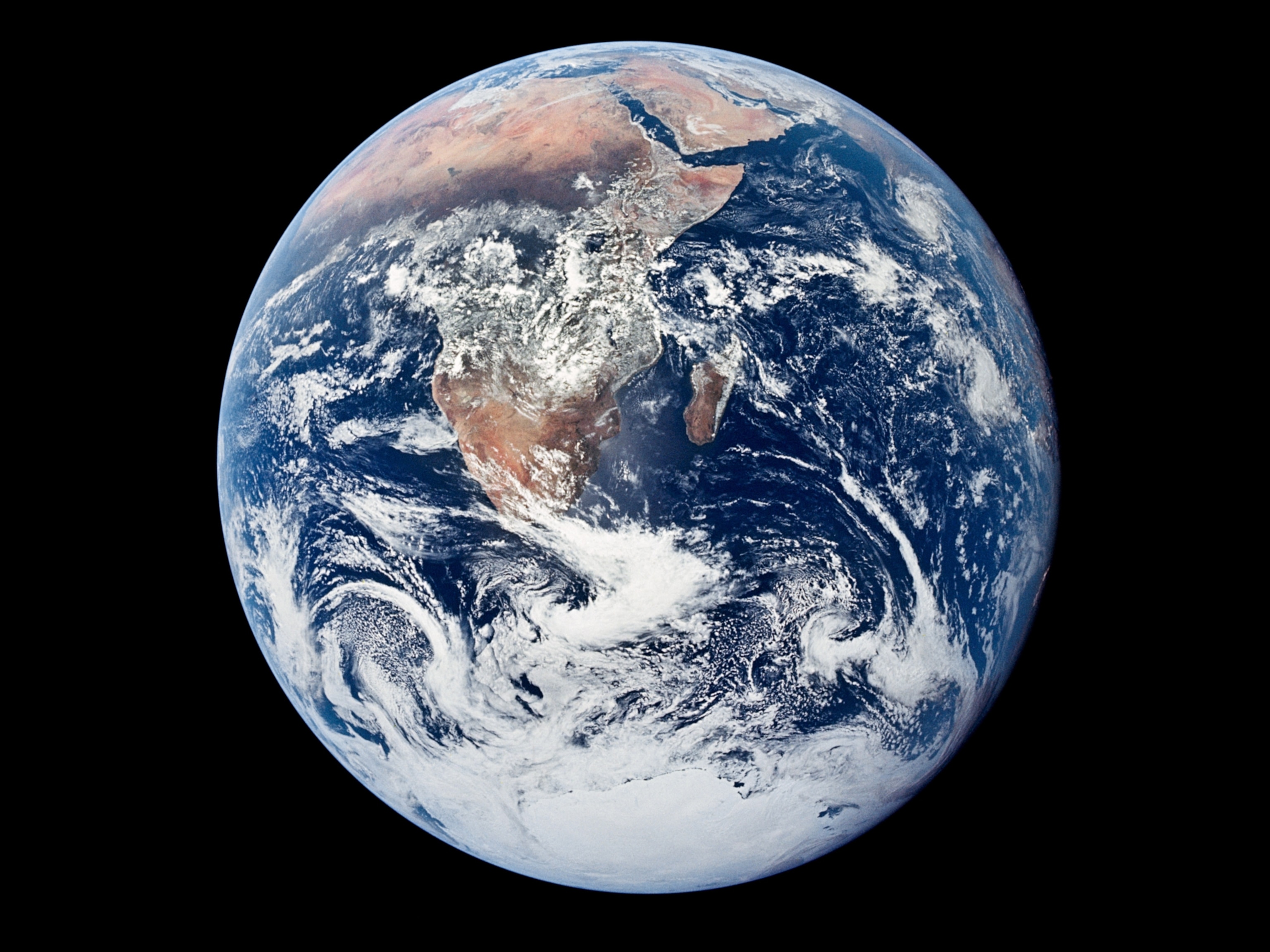
Japanese Monks Recorded the Climate for 700 Years
Some of the oldest continuous historical records from around the world show us how dramatically the climate has changed.
Lake Suwa sits in the Kino Mountains of central Japan, in a region sometimes called the Japanese Alps. When the lake freezes over, daily temperature changes cause the ice to expand and contract, cracking the surface and forcing it upward into a ridge.* Legend has it that the ridge, called the omiwatari, is formed by the feet of the Shinto gods as they cross the lake. Every year since at least 1443, the priests who live at the shrine on the edge of Lake Suwa have carefully recorded the date the ridge appears.
In 1693, on the other side of the world, a Finnish merchant named Olof Ahlbom started recording the date and time of the spring ice breakup on the Torne River, which forms part of the border between Sweden and Finland. Though Ahlbom’s recordkeeping was interrupted in 1715, when he had to flee a Russian invasion, he resumed it after he returned home in 1721, and it has been carried on by other observers ever since.
When scientists want to glimpse the climate of the ancient past, they almost always have to use indirect evidence—changes in tree rings, ice-core layers, or pollen deposits. But the ice records from Japan and Finland, which are the longest of their kind, give us a more direct look at the climate our distant ancestors experienced.
John Magnuson, an ecologist at the University of Wisconsin-Madison, was introduced to the Japanese and Finnish data in the 1990s, when he convened an international group of scientists to compare ice records from across the Northern Hemisphere. Only recently, however, did Magnuson team up with ecologist Sapna Sharma of Toronto’s York University for a more detailed analysis of the very longest records. Magnuson, Sharma and their colleagues arranged for translations of the notations—some of which were made on fragile rice paper—consulted experts about local conditions, and, in the case of the Lake Suwa data, struggled to decode a calendar that not only differed from the Western calendar but varied depending on which shrine was using it. “It was a truly interdisciplinary project,” says Sharma.
The results of their study, published today in Nature Scientific Reports, show that since the Industrial Revolution, changes in the timing of freeze and thaw have accelerated, and suggest that the yearly rhythm of the ice in both places has become more closely tied to the concentrations of carbon dioxide in the atmosphere. Extreme events have become more common, too: In the first 250 years that Shinto priests recorded the appearance of the ice ridge on Lake Suwa, for instance, there were only three years during which the lake did not freeze. Between 1955 and 2004, there were 12 freeze-free years on Lake Suwa; between 2005 and 2014, there were five. (Magnuson reports that the lake did not freeze during the winters of 2015 or 2016, either.)
Many scientists have plumbed the journals of birdwatchers, botanists, and other observers for evidence of climate change. Henry David Thoreau’s notes from Walden Pond in the mid-1800s show that some flowers once bloomed much later than they do now , and naturalist Joseph Grinnell’s obsessive surveys of California wildlife from the early 1900s show that some mammal species are moving northward and uphill from their earlier territories. These observations are snapshots of the relatively recent past, detailed pictures taken over just a few years and compared with records from a century or so ago. But the ice records from Japan and Finland are epic movies, telling a much more complete story of the changes humans have wrought on the climate over time.
These long, quietly sustained records, the work of generations, could also be seen as a preview of sorts, hinting at the human cooperation and persistence needed to cope with the changes ahead. Those changes could be great indeed: If atmospheric carbon-dioxide concentrations and air temperatures continue to rise, the researchers conclude, the gods of Shinto legend may one day cross Lake Suwa for the last time.
*This story has been corrected to say that temperature variations, rather than hot springs in the lake, cause the ice to crack and form a ridge.
Michelle Nijhuis is a regular contributor to National Geographic. Follow her on her website and on Twitter.





